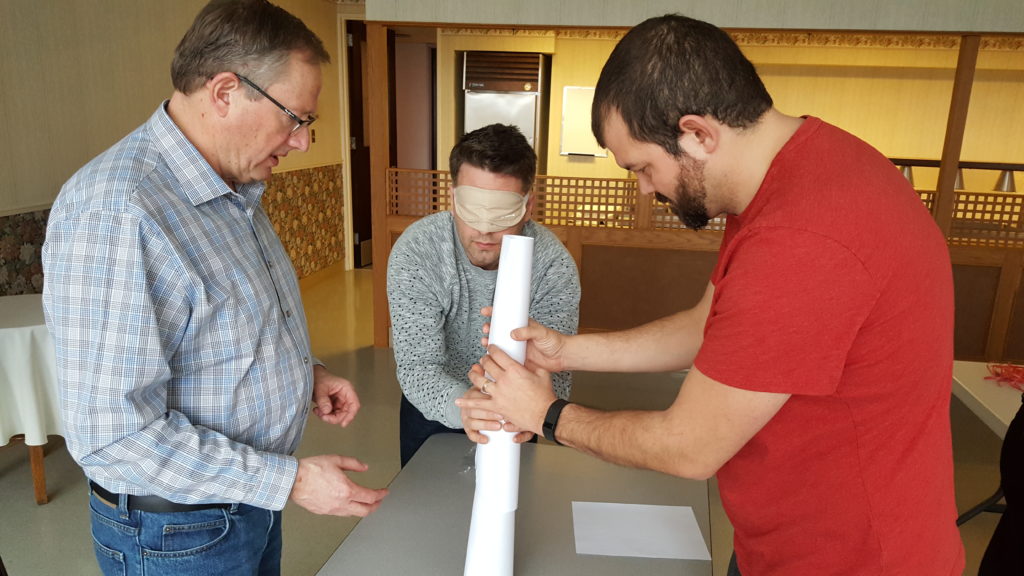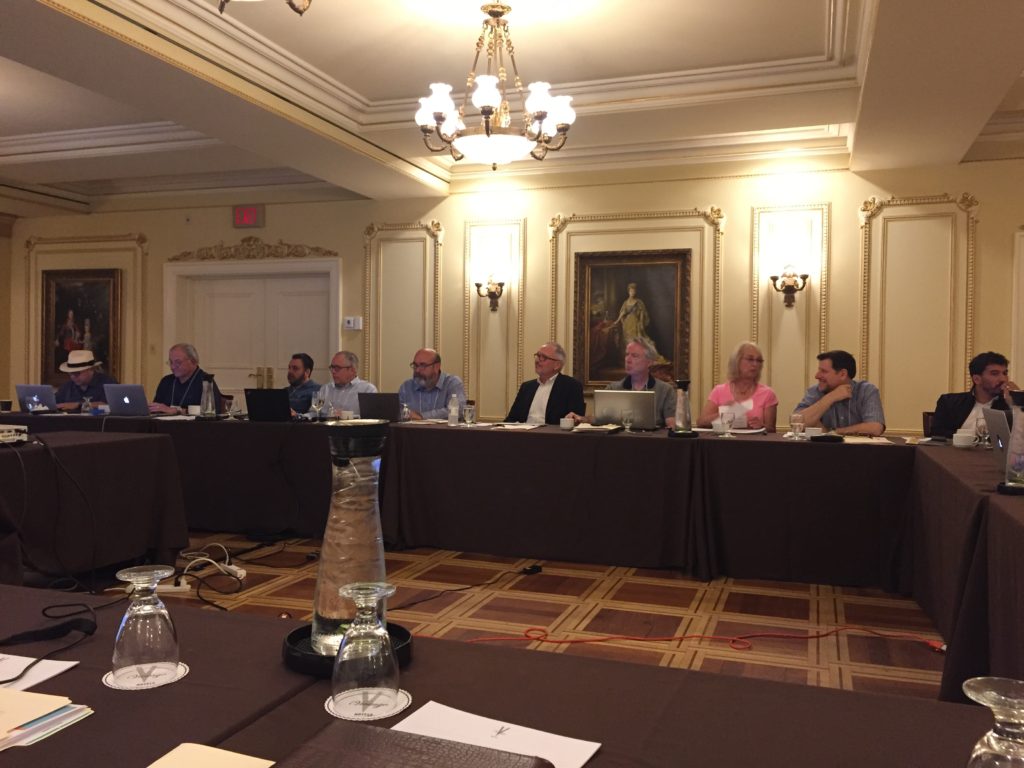Leadership is Likadis Likadat
The idea of ‘leadership ellipse’ is perhaps the most striking leadership concept I’ve come across most recently. How in the world is one supposed to ‘balance’ the inner spiritual life and the outer demands of leadership and tame tensions like being in the world but not of it, faithfulness and fruitfulness, impact and profit, being and doing… and remain sane?!
LIKAWHAT?
So after paying lots of money to take a course in Mentoring these were among the final words of admonishing (from Dietrich Bonheoffer): “Let him who cannot be alone beware of community” and “Let him who is not in community beware of being alone.” Huh? Now, which is which? Give me back my money! LOL!
Welcome to the business of life and leadership–paradox and ambiguity. To live in one extreme or the other is the easy option (any ‘fool’ can, excuse me to say); but to be able to hold two extremes in balance in your head, heart and in life is the real deal and few are able to handle this well. Yet that is an essential ingredient for success. In fact, sometimes these apparently contrasting dimensions of life are not even to be balanced per se but to be continually held in tension. To be comfortable with the uncomfortable tension and do well therein, that is the issue!
Pursuance of a life and leadership of integrity is living as activists and contemplatives, following and leading, managing our outward leadership responsibility and inward spiritual reality as well as having external organizational success principles and internal spiritual disciplines jiving. Robert Fryling, in his insightful work, The Leadership Ellipse, brings these to the fore and challenges leaders to integrate our lives in the sense of one’s outer and inner worlds being one, synchronous. Fryling’s metaphor to describe a life holding these foci and tensions together is the ellipse.
CALL IT WHAT YOU MAY—BUT IT’S THERE!
Why does Fryling use the ellipse (an elongated circle) metaphor and how useful is that in all the cross-cultural contexts in which I serve? I ask because there are too many times when one is caught off guard trying to use a metaphor (like ‘snowball effect’) that does not cross cultures well. I don’t want a situation of trying to relate a concept that I appreciate so well from a Western context but struggle to transmit.
Fryling’s love for, and deep understanding of, geometry led him to employ this amazing metaphor because an ellipse “is defined by two distinctly different focal points that are of equal importance. One point is not inferior to the other, and both are needed if there is to be an ellipse.”
For Fryling, “one focal point is our inner spiritual life, our longings, our affections and our allegiance to God. The other focal point is our outer world and organizational life, what we do and how we do it. Together these focal points define an ellipse that circumscribes our true spiritual leadership. It represents the dynamic tension between our soul and our actions, and gives us a mental image for personal, spiritual and professional integrity in who we are and how we lead.”
While almost every schooled person, irrespective of culture, may ‘get it,’ I’m glad he uses other metaphors which everyone can appreciate, like form and freedom, the fixed bone structure and flexible muscles of the human body plus basic theology of the full humanity and full divinity of Jesus Christ.
PREDICTOR OF LEADERSHIP SUCCESS
This sense of dissonance between a leader’s outer world and inner world is normal. “We live with paradoxes all of the time,” says Fryling; even Jesus the ultimate leader wasn’t spared. His prayer for his followers was “to live in the world without at the same time being of the world.” In many ministries, like mine, there is a constant struggle between being faithful and being fruitful.
Those are leadership ellipses right there when “waiting on God to move or to shift something inside me while at the same time still needing to lead in the public arena” (Ruth Haley Barton). In fact, Barton goes on to mention how “we might notice tension between what the spiritual life requires and what it takes to be (or at least appear!) successful in the current cultural milieu. On our good days, we might experience these tensions as a place of paradox where creative solutions might be found, but on other days they feel like polarities that are impossible to manage.”
In rapid fire, she continues: “…there is real tension between what the human soul needs in order to be truly well and what life in leadership encourages and even requires. There is the tension between being and doing, community and cause, truth-telling and putting the right spin on things. There is the tension between the time it takes to love people and the need for expediency. There is the tension between the need for measurable goals and the difficulty of measuring that which is ultimately immeasurable by anyone but God himself.
“There is the tension between the need for organizational hierarchy with all the power dynamics this creates and the mutuality and interdependence of life in community to which we as Christians are called. There is the tension between knowing how to “work the system” and entering into trustworthy relationships characterized by trust and a commitment to one another’s well-being. There is the tension between the need for an easy discipleship process through which we can efficiently herd lots of people and the patient, plodding and ultimately mysterious nature of the spiritual transformation process. And there is the challenge of knowing how to speak of these things in fruitful ways in the very inside places of power without becoming polarized in our relationships with one another.” Phew!
INTEGRITY AGAIN!
Living in the tension of this and that, yin and yang, and learning to be comfortable in the space and place, while taming the tension has a lot to do with living a life of integrity. Remember, integritas is about being one whole (integers); not fractionated. And it’s hard.
My seminary president put it this way in his book, Called: “Authentic discipleship delivers us from a compartmentalized life. Rather than having a life with segments and partitions—divisions between sacred and secular, personal and public, image and reality—we’re called to one whole and integrated life. It has to be said, of course, that we usually don’t want such a life and prefer the separate compartments. Such divisions provide room for our conflicting and contradictory instincts and desires. This is how we try to manage our several selves. It’s the hedge-your-bets approach to life, highly appealing but ultimately disappointing. It’s like approaching life as a series of snacks rather than committing ourselves to a full meal” (Mark Labberton).
GAME ON
Fryling, Barton, Labberton, Scazzero and others have assured me that the paradoxes and tensions that I sense as a leader are not only real but normal…and can be successfully grappled with. I’m more willing to embrace elliptical leadership. How about you?
After studying several leaders I have come to the conclusion that the degree to which one is able to be comfortable with and live, love and lead well in the tension of this and that, yin and yang, determines their ultimate leadership success or otherwise. From my little experience and research, the best leaders in the world are those who are not only able to get comfortable with being uncomfortable living in such tensions but mastered the art of dexterously handling both well.
As long as we are alive we will live with ambiguity and grapple with paradox. Part of our discipleship—learning to live and lead like Jesus—is to master how he lived his elliptical leadership life as the God-Man, knowing it can be done; and it must be done.
Works Cited
Barton, Ruth Haley. 2008. Strengthening the Soul of your Leadership. Downers Grove, IL: InterVarsity Press.
Fryling, Robert. 2010. The Leadership Ellipse: Shaping How We Lead by Who We Are. Downers Grove, IL: InterVarsity Press.
Labberton, Mark. 2014. Called: the Crises and Promise of Following Jesus Today. Downers Grove, IL: InterVarsity Press.




